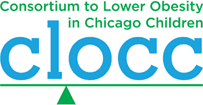Frequently Asked Questions About Childhood Overweight and Obesity
Q. What do you mean by “childhood overweight”? Is that the same as “childhood obesity”?
A: These terms often mean the same thing. Childhood obesity is the more common term used in newspapers, on radio and in other media. However, childhood overweight is the accepted clinical term. This is similar to “high blood pressure” (common term) and “hypertension” (clinical term). Children under 18 years old are defined clinically as overweight if they are above the 95th percentile of body mass index (BMI) for their age and gender. Children are at risk for overweight if their BMI percentile falls between the 85th and 95th percentiles for their age and gender. We use the term obesity if we are referring to the general condition, and overweight if we are speaking in medical terms or referring to data. If this doesn’t help answer your question, click here.
Q. Why is childhood obesity called an epidemic?
A. An epidemic is defined as “an outbreak or unusually high occurrence of a disease or illness in a population or area”.(Source) The rates of childhood overweight (see the previous question) have tripled nationally since the 1970s. State-by-state data on the rates of adult obesity go back to the 1980s and when viewed over time, they provide a clear picture of an epidemic in action. Go here to see this for yourself.
Q. Is there an epidemic of childhood obesity in Chicago?
A: Kindergarten-aged Chicago children have been found to be overweight at more than twice the national average, and children in some Chicago communities have been found to be overweight at 3 to 4 times the national average. Click here to see these data.
Q. What is causing the epidemic?
A. There is no simple answer to this question. From genetics to politics, or from unhealthy cultural norms to too many hours spent in front of a television, there are a seemingly endless number of factors that are contributing to the rapid spread of obesity. At the simplest level, it is obviously a matter of more calories consumed than expended. However, few (if any) children, families, or communities can control their environments enough to be immune from all the potential risk factors for obesity. That is why broad collaborations like CLOCC are thought to be needed—to facilitate ecologic approaches.
Q. I want to get involved. Where do I start?
A. At a minimum, please let us know you found us. Complete the Join Mailing List form so we can include you in mailings, invite you to participate in events or projects, include information about your organization and its programs in our reports to other partners, etc. Attending a Quarterly Meeting is another excellent way to get involved.
Q. I am concerned about (my/an) overweight child; what can I do about it?
A. Talking about weight can be a very difficult thing to do and it is very important to be aware of the way children feel about their body. Set a positive example, don’t focus too much on a child’s actual weight without reinforcing healthy daily behaviors, and make changes in the child’s environment that might support these behaviors. CLOCC’s 5-4-3-2-1 Go! recommendations provide more information on the kinds of healthy daily behaviors that can lead to weight control. Be sure to include the whole family in changing behaviors and (if appropriate) have the child’s pediatrician involved in addressing your concerns.
Q. What is prevalence?
A. Prevalence is an epidemiological concept used to estimate how common a condition is in a particular population during a specific time period. Prevalence is calculated by taking the total number of cases in the population divided by the number of individuals in the population. Prevalence is expressed as a percentage.
Q. How is overweight and obesity status determined for children?
A. For children and youth up to 19 years of age, weight status is based on body mass index (BMI) percentile for age and sex. A child is overweight with a BMI at the 85th to 94.9th percentile. A child is obese with a BMI ≥95th percentile. (BMI is a measurement that compares weight to height; for example, children in the 95th percentile have a higher BMI than 95 of 100 similar children.)
A word of caution: Overweight and obesity prevalence increases as children age. Therefore, comparing prevalence rates for children of similar ages is important. US children have experienced a rapid increase in overweight/obesity in recent years. Thus time period comparisons are important to interpret trends. Parent/self-report of child weight status tends to underreport overweight/obesity. Weight status obtained from direct measurement is more accurate. Therefore, the method for determining weight status can be important in the interpretation of prevalence rate comparisons. Certain subpopulations including low income, Hispanic, and Black children have higher rates of obesity. Therefore, knowing the characteristics of the population for which prevalence data are presented will be important in interpretation of prevalence rates.
If you have a question that is not answered here, please contact us at info@clocc.net.

